The document discusses the application and principles of faradic current in muscle stimulation, emphasizing its use in medical treatments for muscle contraction and rehabilitation. It outlines the characteristics of the current, its physiological effects, treatment protocols, contraindications, and the necessary equipment for effective implementation. Additionally, it highlights the importance of proper patient positioning and electrode placement, as well as specific techniques for stimulating muscle groups and enhancing recovery.
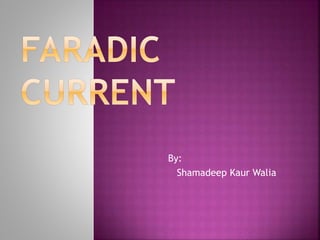
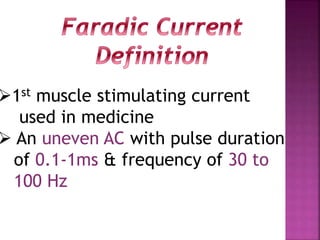
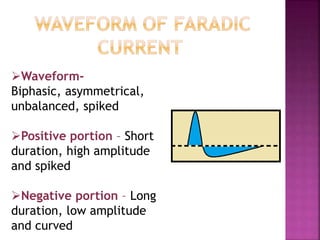
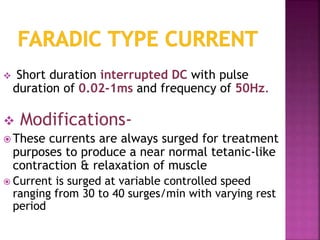

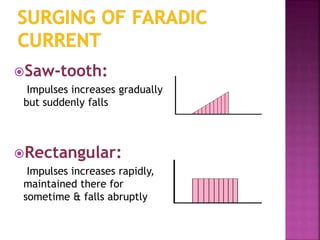
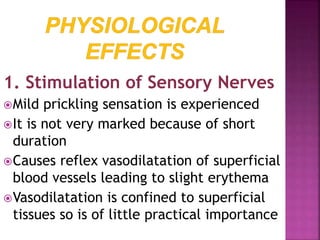
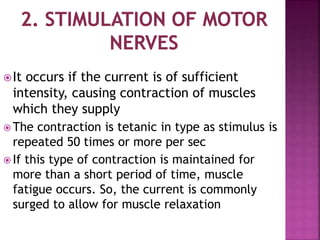




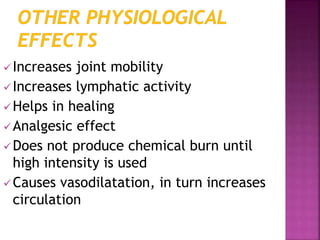













![Equipments Required:
• Low frequency electronic stimulator
• 2 leads [1cathode & 1anode]
• 2 suitably sized carbon/metal electrode
• Aqueous gel, a sand bag
• Bandage, straps, micropore or adhesive tape
• 2 small basin of warm water
• Towels, soap
• Insulating cream [petroleum jelly, vaseline]](https://image.slidesharecdn.com/faradiccurrent-190228143555/85/Faradic-current-27-320.jpg)










